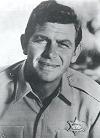General Discussion on any topic relating to CPAP and/or Sleep Apnea.
-
dsm
- Posts: 6996
- Joined: Mon Jun 20, 2005 6:53 am
- Location: Near the coast.
Post
by dsm » Thu Nov 13, 2008 3:24 pm
This is data off a new CMS-50E pulse/ox - the 1st thing that struck me about it is the almost mirror image reversal of Heart Rate to SpO2.
What I am asking is
1) "is there a known correlation between HR and SpO2 ?"
2) "Does SpO2 rise if HR falls (as appears to be the case in this chart ?)"
Thanks
DSM
( I am inclined to think there isn't any correlation but the evidence in the chart sort of suggests there could be some link !)

xPAP and Quattro std mask (plus a pad-a-cheek anti-leak strap)
-
papdad
- Posts: 61
- Joined: Tue Oct 28, 2008 6:08 am
- Location: Texas
Post
by papdad » Thu Nov 13, 2008 6:15 pm
Would really like to hear a good answer on this also. After watching my O2 levels for a couple of years I have been unable to determine any real correlation between heart rate and O2 level.
Norm
ResMed VPAP Auto 25 - HumidAire 4i - Mirage Quattro FF - Invacare Platinum XL & Homefill II
-
discusdoc
- Posts: 17
- Joined: Tue Nov 11, 2008 7:56 pm
Post
by discusdoc » Thu Nov 13, 2008 6:18 pm
There is no correlation between HR and Sp02.
-
mindy
- Posts: 1753
- Joined: Sun Aug 12, 2007 9:36 am
Post
by mindy » Thu Nov 13, 2008 8:14 pm
Interesting ... I had heard that when SPO2 drops, one's heart rate speeds up. With my recording pulse oximeter I've seen that correlation. It seems logical - when body is detecting lack of oxygen, heart would pump faster.
Mindy
"Life isn't about waiting for the storm to pass, it's about learning how to dance in the rain."
--- Author unknown
-
dsm
- Posts: 6996
- Joined: Mon Jun 20, 2005 6:53 am
- Location: Near the coast.
Post
by dsm » Thu Nov 13, 2008 8:23 pm
I visited my Doc today (after having blood test done) & was reassured to be told all is well (but Cholesterol level needs dropping just a tad or two).
I showed him the chart & asked his opinion - he said he understood that there is a correlation in that the body regulates itself based on the absorption of oxygen into the blood via the lungs - if that remains a relatively constant rate then variation in the pulse rate will vary the volume of oxygen absorbed into the blood
The way he put it was - faster pulse, less oxgyen absorbed in that pulse of blood as it will have gone through the lungs faster ?.
Still thinking about it all
DSM
xPAP and Quattro std mask (plus a pad-a-cheek anti-leak strap)
-
jnk
- Posts: 5784
- Joined: Mon Jun 30, 2008 3:03 pm
Post
by jnk » Fri Nov 14, 2008 7:35 am
I think the point would be how your breathing events correlate to pulse and O2 data. For example, if your body reacts to apneas with arousals, then the same event that lowers your O2 may also raise your pulse. So overlay your flow-generator data with that pulse-ox data and then you may have something.
But I'm not a doc--or a professional anything, for that matter.
-
Guest
Post
by Guest » Fri Nov 14, 2008 10:40 am
I have had the same experience as Mindy with my pulse-ox. Also noticed that any movements, turning over etc., also elevates the heart rate briefly.
-
ca_hosehead
- Posts: 150
- Joined: Sat Dec 09, 2006 3:51 pm
Post
by ca_hosehead » Fri Nov 14, 2008 3:20 pm
When I see an apnea event I see a drop in O2 and a rise in heart rate. When I turn over I see a rise in heart rate but O2 is not effected. I haven't seen any other correlations.
-
discusdoc
- Posts: 17
- Joined: Tue Nov 11, 2008 7:56 pm
Post
by discusdoc » Fri Nov 14, 2008 3:31 pm
Perhaps I should have been a bit more detailed in my previous post. Tachycardia (rapid heart rate >100) can be caused by hypoxia (low SpO2), but there isn't any sort of direct correlation, i.e. rise in heart rate leads to low pulse ox and vice versa.
I've seen many, many patients with heart rates in the 160's with normal oxygen saturation and just as many with low heart rates requiring ventilators to help them breath.
The point being that it is MUCH more complicated than heart rate up, pulse ox down.
-
dsm
- Posts: 6996
- Joined: Mon Jun 20, 2005 6:53 am
- Location: Near the coast.
Post
by dsm » Fri Nov 14, 2008 3:40 pm
discusdoc wrote:Perhaps I should have been a bit more detailed in my previous post. Tachycardia (rapid heart rate >100) can be caused by hypoxia (low SpO2), but there isn't any sort of direct correlation, i.e. rise in heart rate leads to low pulse ox and vice versa.
I've seen many, many patients with heart rates in the 160's with normal oxygen saturation and just as many with low heart rates requiring ventilators to help them breath.
The point being that it is MUCH more complicated than heart rate up, pulse ox down.
Am happy that what you are saying from your experience is a good summary. The more I think of the potential interactions the less I see any tight corelation. I just scanned a nights data off the pulse ox to locate those spikes shown on the PR chart to see what the SpO2 does just before, during & after the spike & there really doesn't seem to be any clear cut connection.
I also tried this simple & obvious test - put on the SpO2 & start monitoring, then breathe rapidly for a min or so - hyperventilate - but the SpO2 stayed within a range 94-95 - but if I then start breathing very slowly the SpO2 dropped to 91. Then when resuming normal breathing again SpO2 came back to 95. Not sure what this proves other than I can conciously lower SpO2 from norm but not raise it much at all above norm. ?
DSM
DSM
xPAP and Quattro std mask (plus a pad-a-cheek anti-leak strap)
-
NightWorkDaySleep
- Posts: 17
- Joined: Tue Oct 21, 2008 5:19 am
- Location: New England
Post
by NightWorkDaySleep » Fri Nov 14, 2008 8:20 pm
DSM, What has not been discussed yet is that Spo2 does not measure actual amount of oxygen in your blood but the capacity for the hemoglobin in your blood to transport oxygen..two separate by critically connected things. I've often heard the monitoring O2 sat is important but you only use it as a significant sign of a patients progress when it's bad. If the sat's good and the patient looks or feels crappy...ignore what the machine says! I did a quick Google search for some info and found this article that may explain it better than I can.
http://www.rtmagazine.com/issues/articl ... -04_07.asp
I realize the article is ten years old but if you look you may find one newer. There is also something called capnography or the numeric measure of co2 at the end of an expiration, I don't think I could adequately explain why that's a better indicator of how your cardiopulmonary systems are functioning it has to do with the kreb cycle and production of "energy" the end result of which is carbon dioxide. but in retrospect makes me wonder if it will be added to sleep labs soon as measuring end tidal co2 only needs the same "port" on a mask as an oxygen port, its used in many places in ICU's and anesthesia, as well as in EMS.
Nights
_________________
| Mask | |
 |















